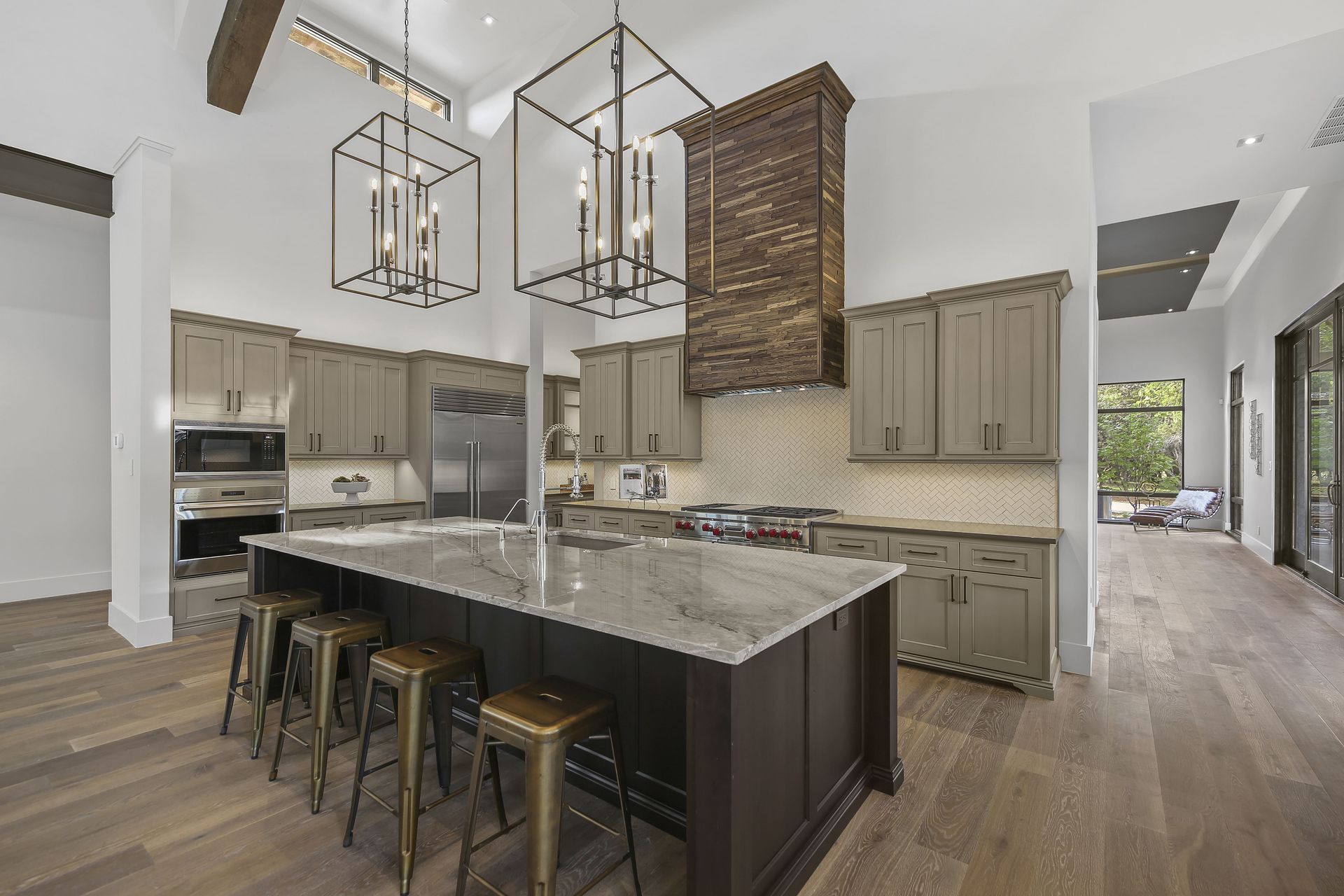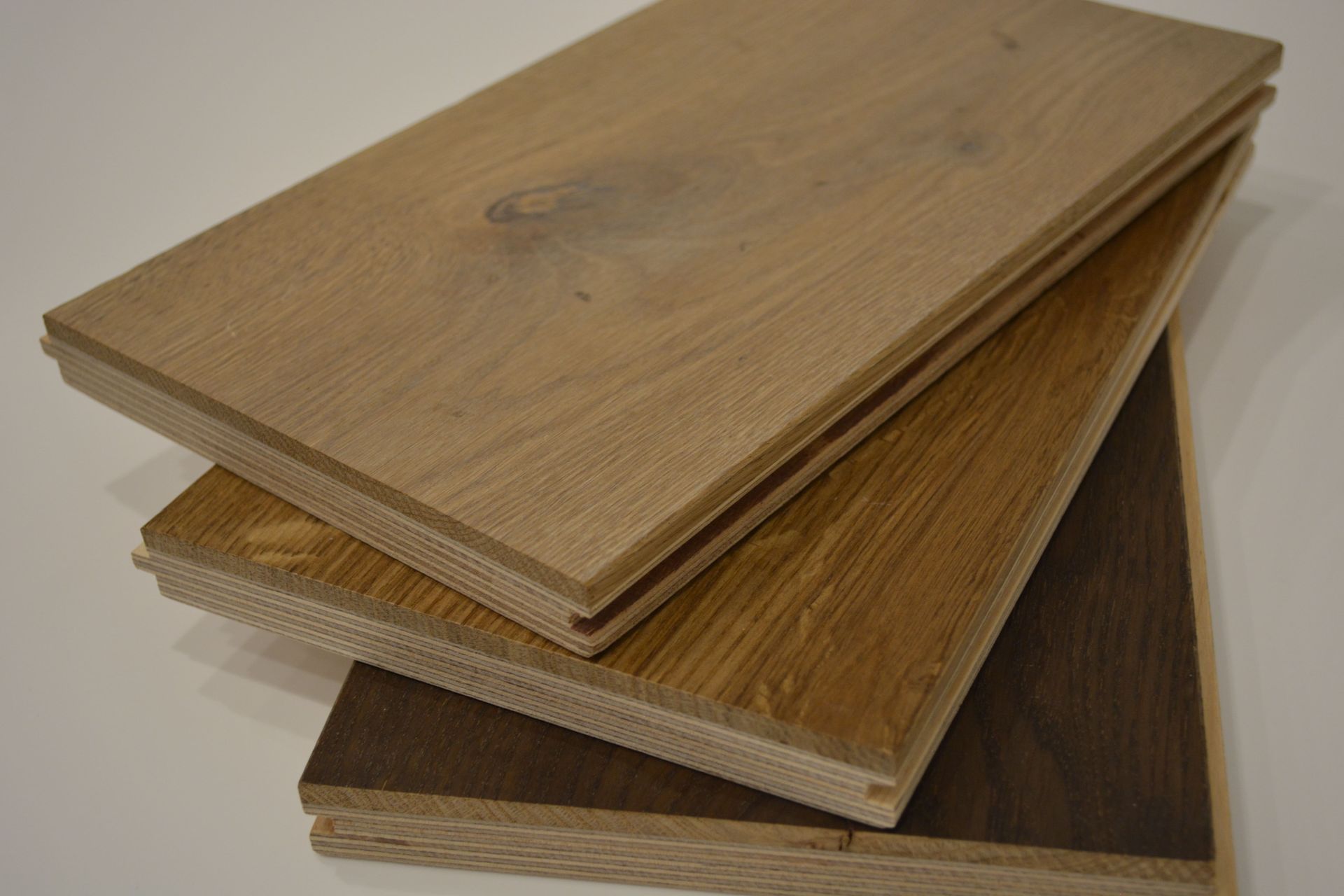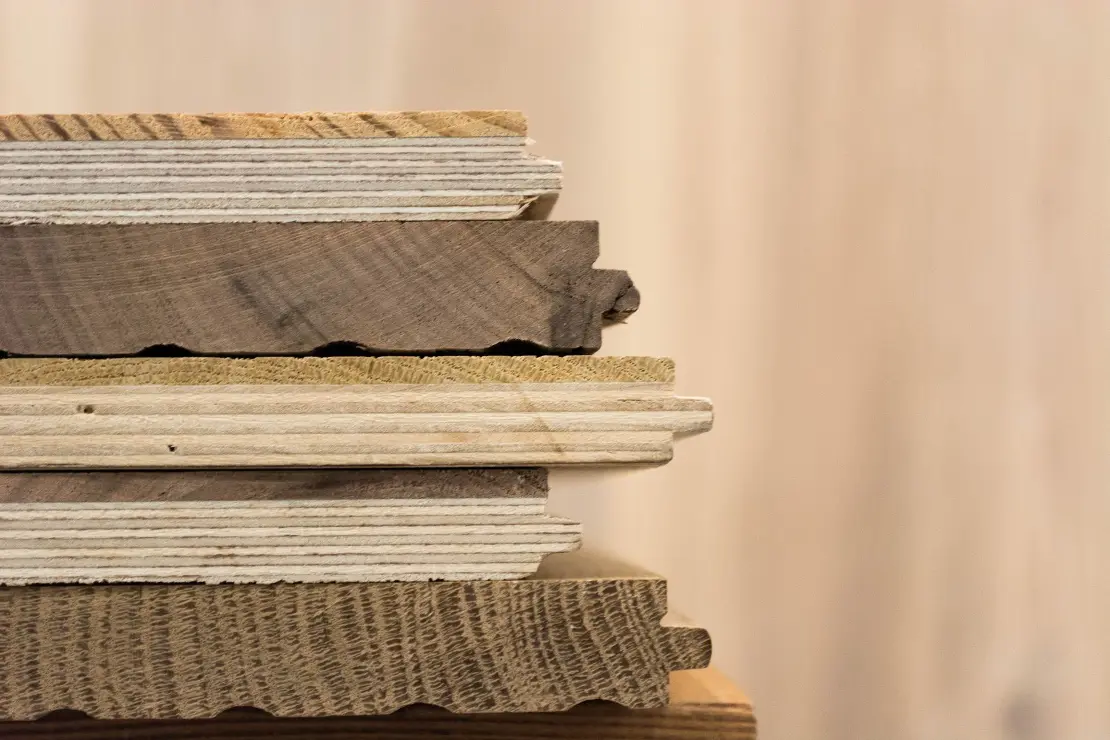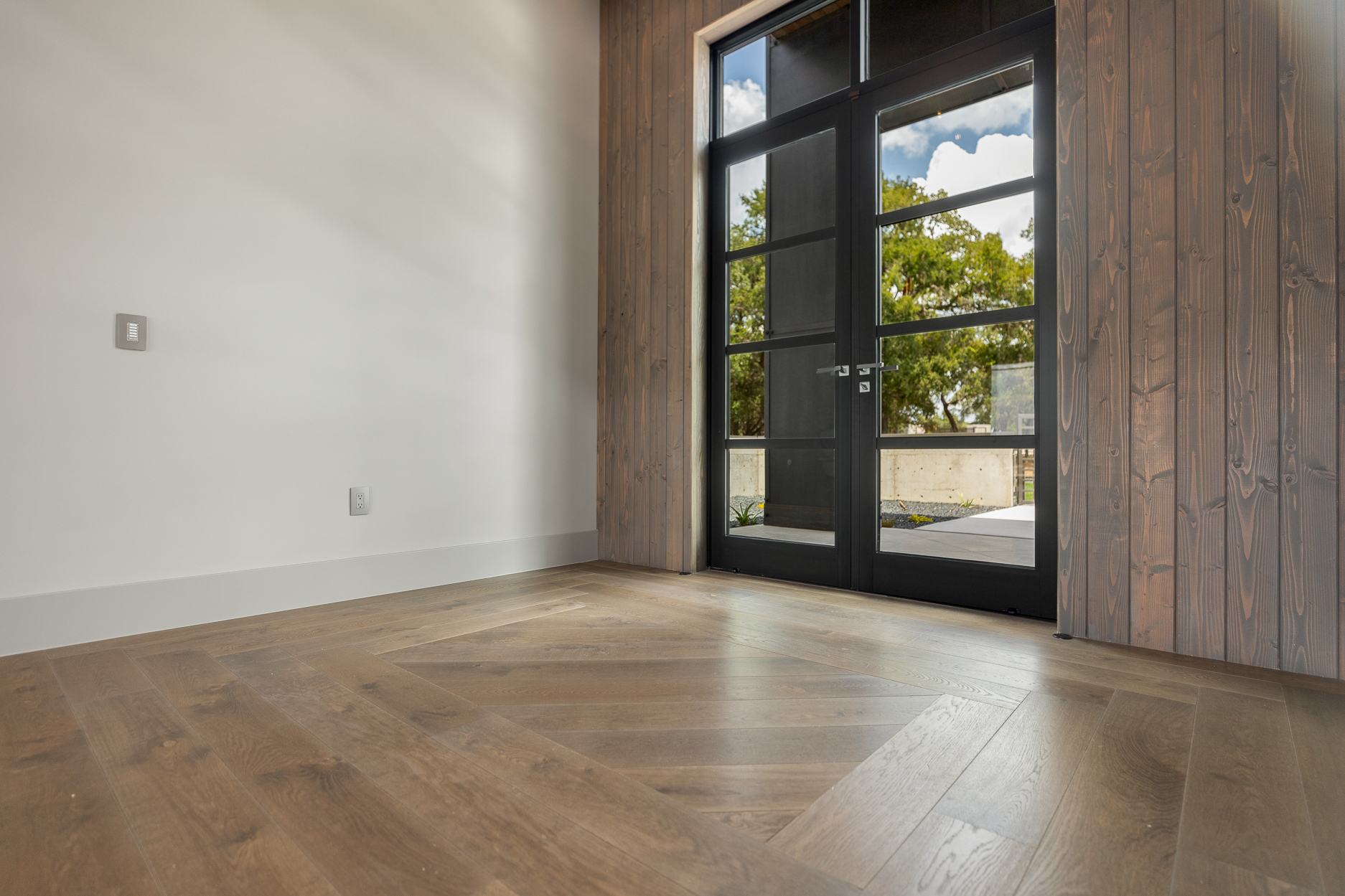Wood floors have been a practical and much-loved feature in residential homes for generations, appreciated for their natural beauty, durability, and versatility.
Today, it’s possible to choose from a huge variety of wood species and flooring types when selecting the perfect wood floor. But aside from aesthetics and personal preferences, it’s also important to choose a wood floor that will meet the practical requirements of any given space, especially when it comes to the intense demands of busy 21st century lifestyles.
In this blog, we’ll take a look at some of the key considerations homeowners, architects and designers need to bear in mind when selecting wood floors, especially when long-term durability is a priority – including the differences between hard and soft woods, and the solid vs engineered flooring debate.
Understanding durability: Why it matters
In the context of wood flooring, durability refers to the ability of the wood to withstand wear, impact, and stress over time without losing its structural integrity or aesthetic appeal.
This includes resistance to scratches, dents, moisture, and changes in temperature and humidity, all of which can affect a floor’s performance. Durability is influenced by factors such as wood species, hardness (measured by the Janka scale), the type of finish applied, and whether the floor is engineered or solid wood.
Wood floor durability matters the most in high traffic areas of the home – that is, zones such as entrances, hallways, kitchens and living areas where there is a high volume of foot traffic on a daily basis, especially from people wearing outdoor shoes that can cause dents or general wear to wood floors. Other areas such as bedrooms and home offices tend to experience less traffic.
Since every client’s lifestyle is different, their flooring needs will also differ. For example, a family with young children will depend on durability much more than older downsizers – but it’s also important to remember that wood flooring choices can endure long after a property has changed hands, so any decisions should be made with an eye on the future, in order to maximize the longevity and value of a project.

Selecting a wood floor species: Hardwood vs. softwood
Wood flooring can be manufactured from both hardwood and softwood tree species – for example oak being a hardwood and pine being a softwood. Hardwoods are typically more durable than softwoods, but this isn’t a hard-and-fast rule, so it’s important to understand the nuances.
What is a hardwood?
Hardwood comes from angiosperm trees, which are a group of trees that reproduce via seeds encased in a fruit or pod, such as acorns or nuts. Angiosperms, also known as flowering plants, include species like oak, walnut, and maple, which are commonly used in flooring.
Their wood structure is characterized by vessels (or pores) that transport water and nutrients throughout the tree, in addition to fibers and rays that provide strength and support. These vessels, coupled with the pronounced growth rings of hardwood trees, create distinctive grain patterns.
Hardwoods typically grow much more slowly than softwoods; they take up to 100 years to reach maturity, leading to a denser wood that is more resistant to wear and tear. For this reason, hardwood is also more scarce, and more expensive.
What is a softwood?
Softwood comes from gymnosperm trees, which are typically evergreen trees like pine, fir, spruce, and cedar. Unlike hardwood, softwood trees reproduce using seeds that are exposed rather than encased in a fruit or pod. These seeds are usually contained in cones.
Softwood trees don’t have vessels – instead they have long, tube like cells running vertically up and down their trunks that are designed to transport water and nutrients quickly, supporting a faster growth rate.
They can reach maturity in as little as 20 years, making softwoods a more readily renewable and therefore less expensive choice. Softwoods also have resin canals that carry sap, which protects the wood against insects and decay, but can cause problems with staining or weeping when the timber is milled.
Because of their simpler structure, softwoods are usually less dense than hardwoods and therefore less hardwearing. However, certain species of softwood can be harder than some hardwoods – this is where an understanding of the Janka Scale comes in handy.

What is the Janka Scale?
The Janka Wood Hardness Scale gauges the hardness of all wood species relative to each other. It is a measure of how resistant any given wood species is to dents, and is determined by measuring the amount of force required to press a metal ball bearing into the wood surface to a depth 50% of its diameter.
The results are measured with various units; in the United States the scores are represented in pounds-force (lbf), in Europe, it is in kilograms-force (kgf), and in Australia, it is shown in newtons (N). The higher a wood scores, the harder it is.
It’s no surprise that the hardest woods on the Janka Scale are hardwoods – for example hickory, oak and maple – but it’s also possible for some softwoods to be harder than some hardwood species. As an example, yew is a softwood that is harder than oak, while balsa wood is a hardwood, yet ranks among the lowest on the Janka Scale.

Engineered vs. Solid Wood Floors: Which is more durable?
In addition to the hardwood vs softwood decision, design professionals also have to choose between specifying engineered or solid flooring – and there are some misconceptions about which is more durable. Let’s take a look at some of the key differences between engineered and solid flooring, and why you might choose one ahead of the other for a residential project.
What’s the difference between solid and engineered wood flooring?
Solid wood flooring is crafted from a single, solid piece of hardwood, typically ¾ inch thick. This type of flooring can be sanded and refinished multiple times, which extends its lifespan significantly. Solid wood provides a timeless look, with natural grains and textures that age beautifully over time.
Engineered wood is constructed by sawing solid wood planks into thin layers called lamellas, which are then bonded to a plywood base, usually in a cross-grain structure that enhances the wood’s stability and resistance to changes in humidity. The top layer of hardwood can be sanded and refinished just like solid wood – at WoodCo, our lamellas are 140% thicker than the NWFA standard, which means they can be refinished just as many times as solid wood.
Which is more durable – engineered or solid wood flooring?
It’s important to say that when it comes to the surface durability of wood flooring, there is really no difference between engineered and solid wood flooring. Both types can suffer as a result of high traffic, acquiring dents, scratches and general wear, so the same decisions around species, wood hardness and finishing will apply.
However, there are some key advantages to choosing engineered over solid wood flooring – specifically around stability and moisture resistance.
Engineered wood flooring has a clear advantage in stability due to its multi-layer construction, which minimizes expansion and contraction. This stability makes it a superior choice in environments where temperature or humidity levels fluctuate significantly, such as basements or climates with distinct seasonal changes. Solid wood is more susceptible to warping or cupping under these conditions, making it less stable in comparison.
Engineered wood suitable for areas where there might be occasional exposure to moisture or higher humidity levels. Solid wood, while beautiful, is more sensitive to moisture and requires careful consideration when placed in rooms prone to humidity changes, such as kitchens or bathrooms.

Enhancing Durability: Wood floor finishes and treatments
The character and finish of a wood floor can also enhance or detract from its durability.
For example, if you choose a select grade floor with very few imperfections and a subtle grain pattern, any wear and tear that does occur will be obvious – whereas a reclaimed or character-grade floor is already full of dents and dings, so any subsequent damage only adds to its charm.
The durability of your wood floor choice can be further enhanced by the finishing method you select. For both solid and engineered wood floors, there are two main methods of finishing – oiling, and urethane-based coatings.
Oil-based wood finishes
Hardwax oil finishes are common in Europe and are growing in popularity in the US thanks to their very natural look. The oil is absorbed into the pores in the wood where it cures and hardens, effectively becoming part of the timber. If cared for properly, oil finishes can last for many years - but they do require periodic maintenance. Oiled floors are more easily repairable if a spot gets damaged - you can simply sand it back and re-oil without needing to refinish the entire floor.
Urethane-based wood finishes
Urethane-based coatings form an extremely hardwearing layer that sits on the surface of the wood. They require very little maintenance, but lack the natural look of an oiled floor - the finish will be thicker and shinier.Urethane-based finishes are also much harder to refinish in the event of damage, while oil-based coatings lend themselves much better to spot touch-ups. Read more about the difference between these two finishing methods.

Get help selecting a wood floor
Durability is arguably the most important factor to consider when selecting or specifying a wood floor – because after all, aesthetics mean nothing if the floor can’t stand up to the practical demands of everyday living. If you need advice on selecting a wood floor to match your aesthetic vision while also delivering many years of robust performance, get in touch.